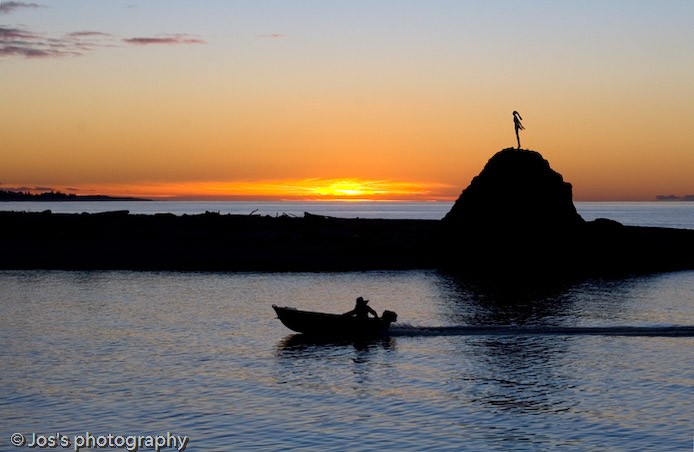View the Whakatane Historical Website
www.whakatanehistorical.org.nz
Looking for local history & information? You might be interested in....
Te Kōputu a te whanga a Toi, Whakatane Library & Exhibition Centre - for local history, art & culture exhibitions.
Whakatane District Museum, Te Whare Taonga o te rohi o Whakatāne houses the museum collection and archives.
Click here for Local Attractions
The story of the coming of the Maori to Whakatane is shrouded in the mists of time, but the oral traditions of the tangata whenua (people of the land) make it clear that the region was settled by a series of migrations over several hundred years.
More Information
The first inhabitant, more than 1,000 years ago, was Tiwakawaka, a grandson of Maui, the legendary voyageur and discoverer of Aotearoa. Tiwakawaka's people had lived in Kakahoroa (later to be named Whakatane) for some generations before the arrival of the famed Toi, founder of numerous tribes (Te Tini O Toi - the multitude of Toi) which occupied much of the North Island's East Coast, Taranaki and the Far North.
Toi's people married into the original settlers and from his stronghold - Kapu-te-rangi (one of the oldest known pa sites in New Zealand) - above Whakatane, his sons Rauru and Awanuiarangi in turn went forth to found tribes of their own.
Some 200 years later came the waka Mataatua bringing the kumara.
Following the directions of his father, Irakewa, the Captain Toroa, his brothers Puhi and Taneatua, sister Muriwai, son Ruaihona, daughter Wairaka and other members of his family sailed to Kakahoroa, mooring in the river estuary near the town's current commercial centre. The men then climbed the hillside to Kapu-te-rangi, leaving Mataatua in the care of the small group consisting mainly of women. The outgoing tide was threatening to carry away the waka when Wairaka exclaimed: "E! Kia whakatane au i ahau" (let me act the part of a man). In breach of tradition, the women paddled the canoe back to safety and from this incident, Whakatane received its name.
Some time later, Toroa and Puhi fell into dispute over the planting of the kumara and Puhi and some of his followers departed in Mataatua for the Far North where he founded the Nga Puhi tribe.
Again, Toroa's people intermarried with the Tangata Whenua and from them descend the Ngati Awa, Tuhoe and Te Whakatohea iwi which remain the guardians of the mana whenua (spirit of the land) of the Eastern Bay of Plenty region to this day.
European settlement began in the 1830s when whalers, sealers and later missionaries and traders made their homes here. The area became a major shipbuilding centre and the vessels were used to carry maize, potatoes, wheat and flax to other northern population centres for sale or barter.
Although most Eastern Bay of Plenty Maori took no active part, the area nevertheless became embroiled in the New Zealand land wars during the 1860s and 70s. In 1869, the famed fighting chieftain Te Kooti raided the town, razing its few buildings. This led to the stationing of a unit of armed constabulary in Whakatane and the construction of a defensive redoubt on the promontory above the town centre.
With the advent of more peaceful times, industrial and agricultural development continued, that process accelerating from 1910 onwards when work began to drain the swamplands of the Rangitaiki Plains. Reclamation in Whakatane also created new land for residential and commercial development.
Agriculture remains an economic mainstay, but since the 1950s, plantation forestry and wood processing have also become increasingly important.
In latter years, tourism too has taken on an important role as more and more people have come to appreciate the region's rich heritage, wonderful coastal and bush resources and outstanding climate.


